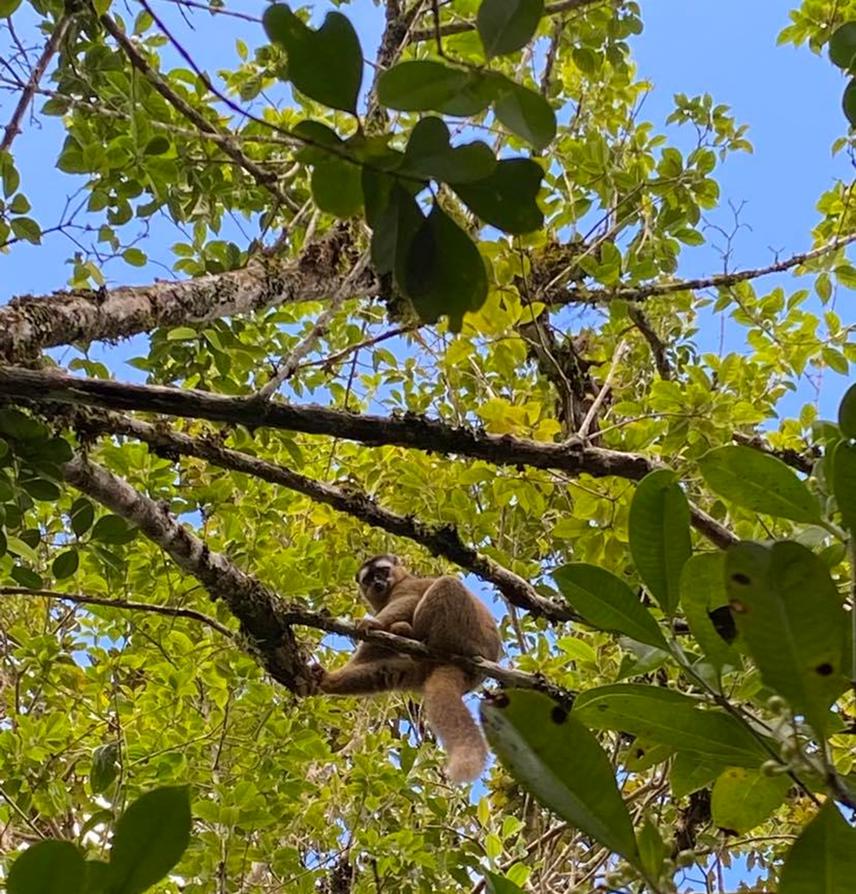Hasinala Ramangason
Other projects
28 Nov 2022
Surviving on a Risky Diet: Use of Molecular Tools to Assess Nutritional Stress in Three Endangered Frugivorous Lemurs
In this study I will evaluate how the spatial arrangement of fruiting trees, their diversity and abundance affect the occupancy of three frugivorous lemur species in a heavily human-modified landscape in South-eastern Madagascar. To address my research questions, I will combine an intensive camera trapping method and botanical surveys. The goal of this project is to resolve a spatially explicit network of plant-lemur interactions at the landscape level. Additionally, it is intended to assess the effectiveness of an ongoing reforestation program on the research site for promoting lemur diversity and inform conservation efforts and management practices.

Eulemur rufifrons.
Increasing human-induced changes in landscape features is one of the most potent factors impacting primate communities and can have significant impact on their ecology. This is particularly evident in Madagascar where forests are highly fragmented due to important rates of deforestation. By disrupting abiotic conditions, fragmentation alters different components of botanical diversity, which consequently affects the structure spatial arrangement of plant communities. Frugivores are particularly vulnerable to these disturbances because tropical forests experience long seasonal fruit shortages, that can mediate important responses in their ecology. Understanding how variation in fruit supply affect frugivorours lemur populations in disturbed habitats is time sensitive given the paucity of frugivores in Madagascar. By using an intensive ground and camera trapping method combined with botanical surveys, I will develop a spatially explicit model to evaluate how the spatio-temporal variation of fruit supply affects the occupancy of frugivorous lemurs in a highly fragmented landscape in Southeastern Madagascar. Besides advancing our understanding of how disruptions in the structure of plant communities cascading effects on frugivorous lemurs can have, this project is intended to guide conservation strategies on the study site. It will help identify keystone resources for frugivorous lemurs and this information is valuable for ongoing reforestation efforts that aim to reconnect some of the fragments to promote range expansion and connectivity between isolated lemur populations. Additionally, by monitoring lemur occupancy in the reforested area, it will provide an early assessment of the effectiveness reforestation efforts that have been implemented to date.
Goals:
1) Evaluate occupancy of frugivorous lemurs in a highly fragmented landscape. This will be achieved through intensive camera trapping, using both arboreal and ground camera traps.
2) Map resource abundance and diversity in multiple plots. Botanical plots will be surveyed around each camera trapping point. Results from these surveys will be linked to the results of the lemur occupancy in a spatially explicit model
3) Assess the effectiveness of an ongoing reforestation program for promoting lemur diversity and inform conservation efforts and management practices. A local NGO, Madagascar Biodiversity Partnership is in charge of the management and conservation of the site. As part of their conservation program, they started a large reforestation program to reconnect some of the fragments. Data will also be collected in the reforestation area to evaluate whether lemurs have started colonizing this area.
Header: Varecia variegata.